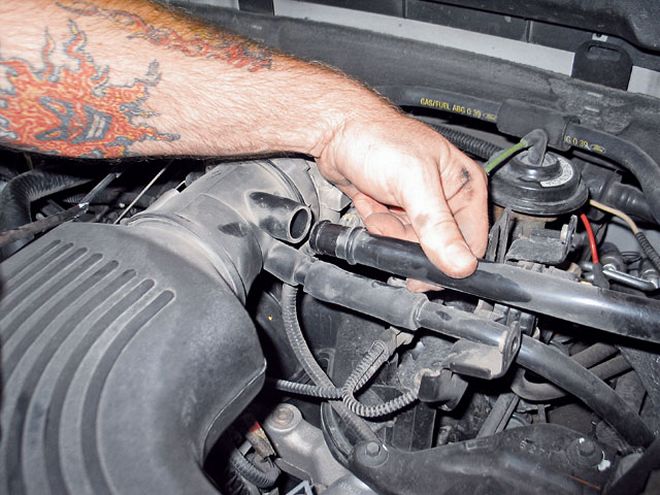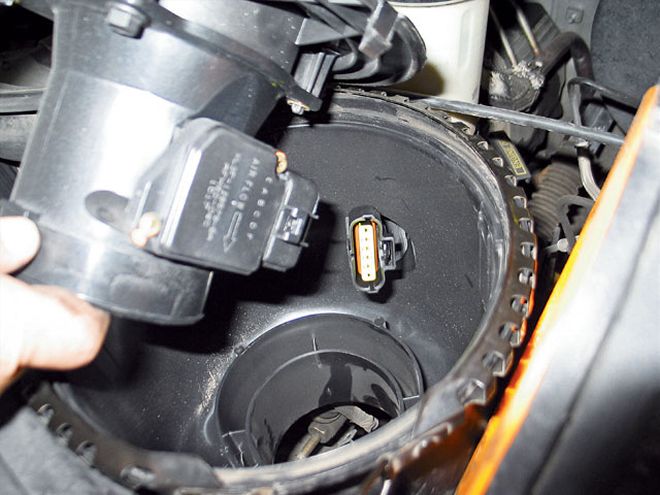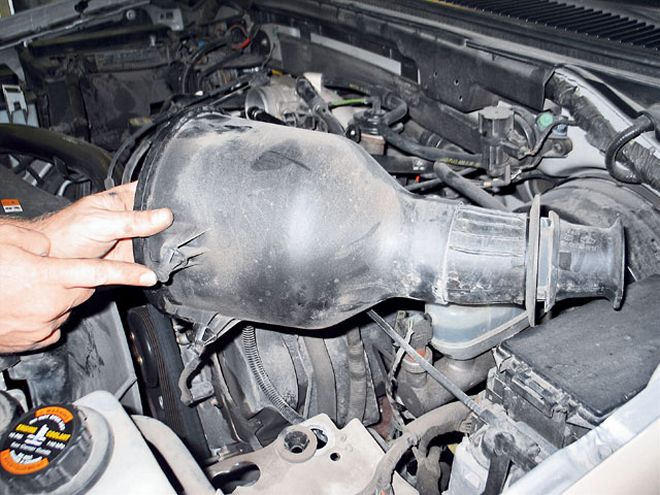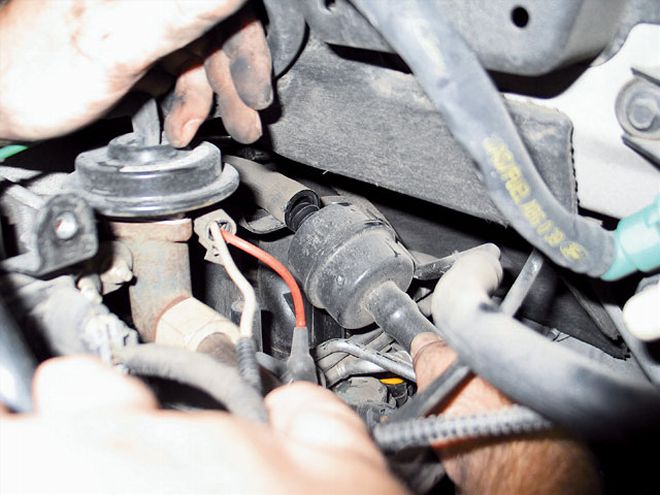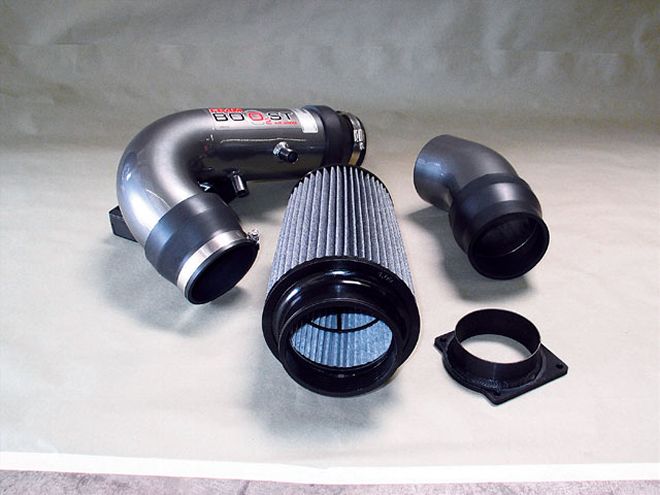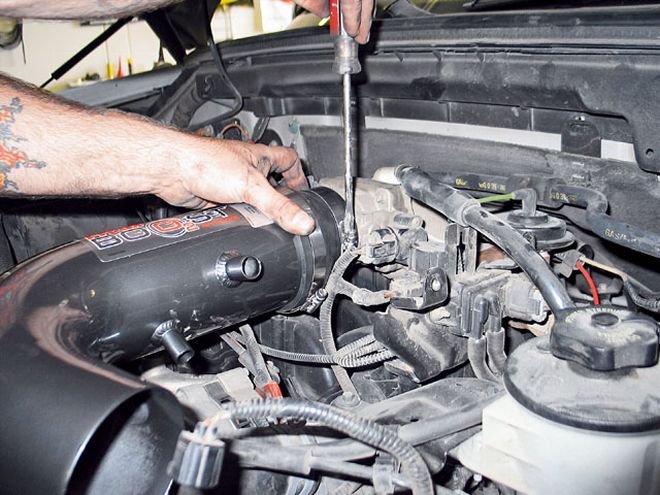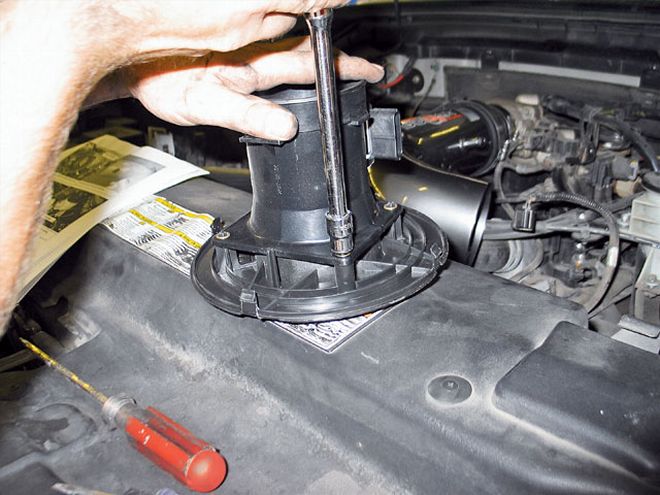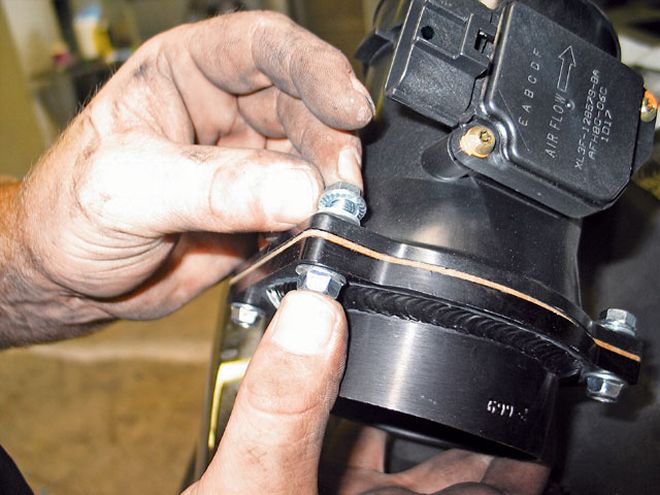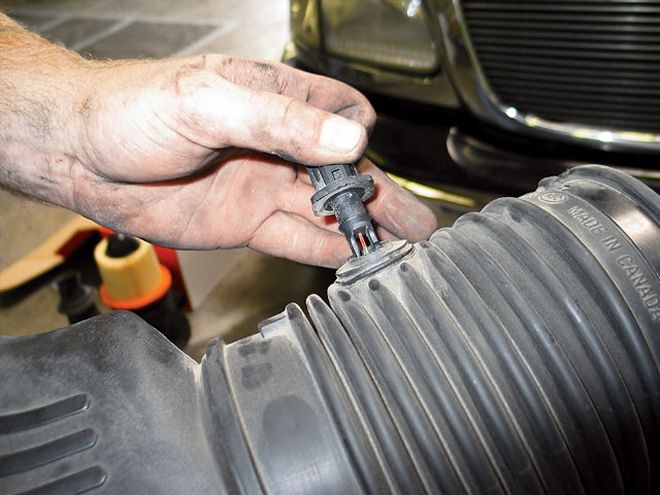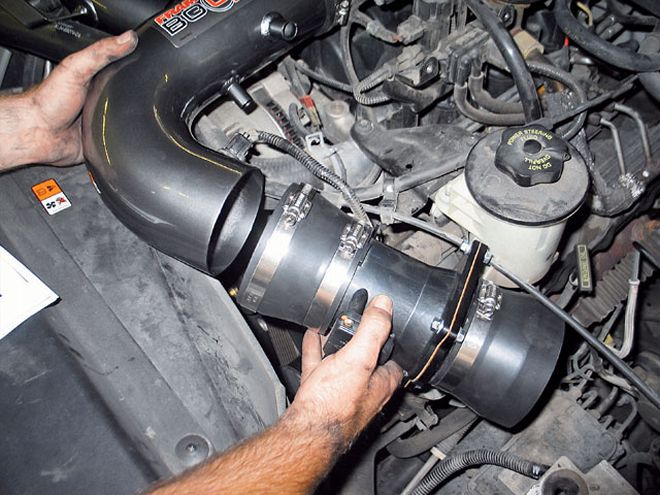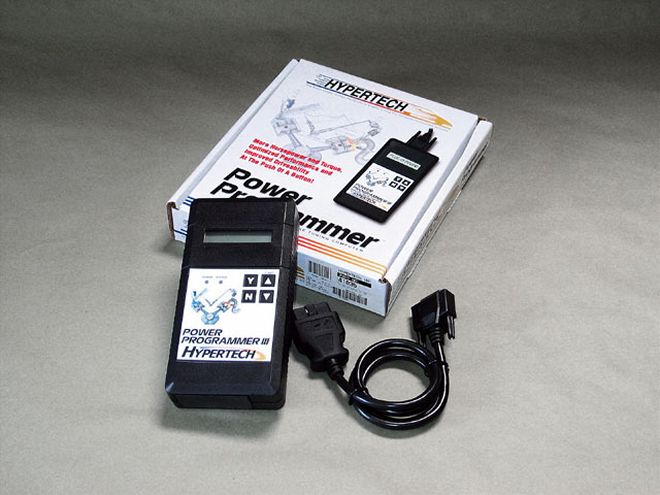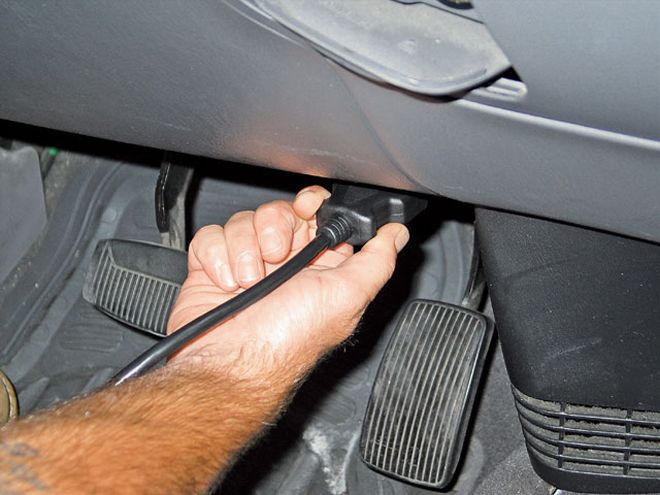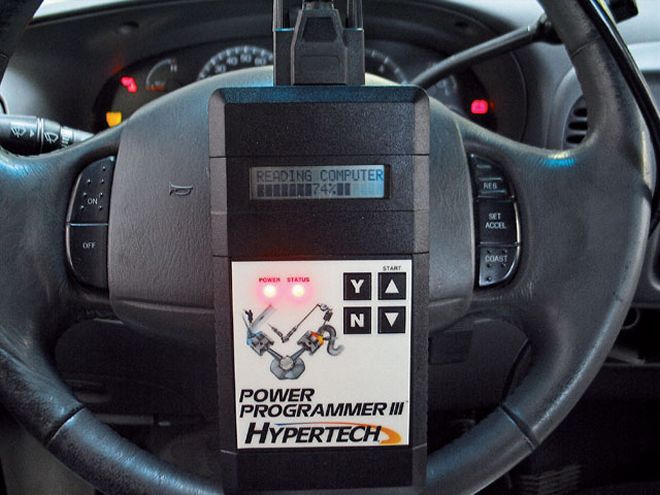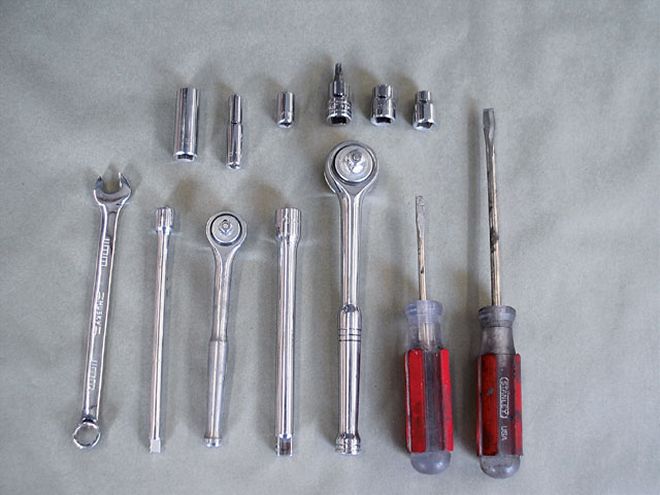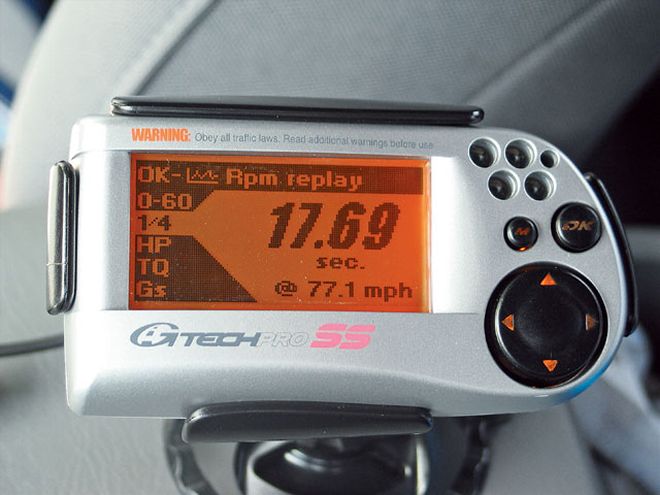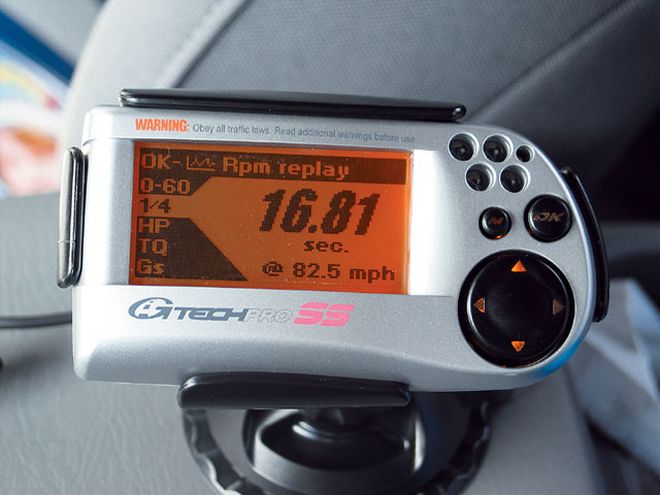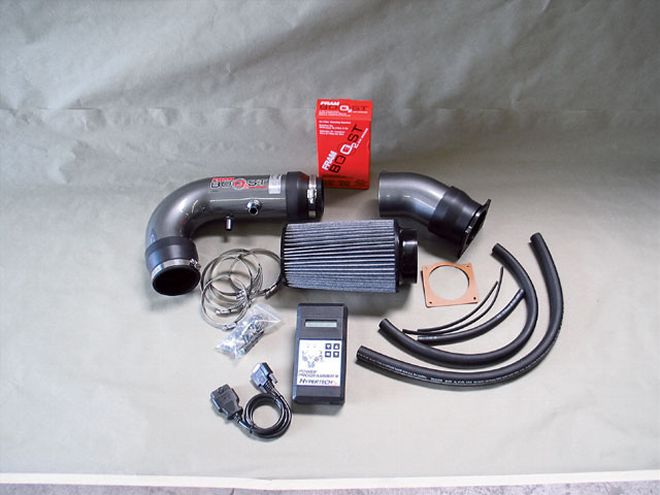
| 2001 Ford F150 the Kit
Every day, we get letter after letter with the same basic question: "How do I make my truck faster without breaking the bank?" As self-proclaimed horsepower junkies, we hear you loud and clear. So, for all you '97-'03 Ford F-150 owners with the 5.4L V-8 under the hood who want to shave about a second off your quarter-mile times or just put the tires up in smoke when you leave a buddy's shop, read on.
We will be using basic parts that, by now, you should all know why they work, but just in case you have forgotten, we will touch on the theory a bit. The parts we will be using for this truck are Fram's new Boost Air Intake system that consists of a mandrel-bent aluminum tube that is powdercoated, a Dryflow filter that requires no oil but is still cleanable, and all the necessary hardware to install it. The system is designed to allow air to get sucked into the motor with less restriction, so when the piston goes down it can pull in all the air it needs without having to pass by all the factory restrictions. The Dryflow air filter that Fram uses requires no oil and is still a washable unit. It will provide more than enough flow to support the 5.4L, and Fram claims a 7.2 hp increase once installed. Instead of strapping the truck to the dyno, we decided to do a few quarter-mile blasts with our new G-Tech performance meter to justify the increase in performance. You can see the G-Tech results at the end of the article.
To complement the intake and let the truck's computer use the newfound air, we enlisted the help of a Hypertech Power Programmer III. The Hypertech unit replaces the factory program with a performance tune that adjusts timing and fuel curves for a company claim of a 10hp gain on the 93 octane setting or 7hp gain on the 87 octane setting. On top of just the power tune, the Power Programmer III also allows you to adjust for oversized tires, rearend gear swaps, transmission shift points, and shift firmness, and it has the ability to move the top speed limiter for all you speed freaks. Since the Hypertech unit stores your stock tune in the programmer itself, if you ever have to take it to the dealer, all you have to do is plug it in and hit the Return to Stock option.
Both of these components were pretty easy on the budget, coming in at about $640 total for this application and are totally suited for a home install, requiring only a few sockets and a screwdriver. The G-Tech told us we clipped off just shy of a full second on the e.t., and our ears told us it must be making more power due to the loud screeching sound coming from the back tire on launch, which it didn't do before. So, check out how all this stuff goes into a Blue Oval pickup.
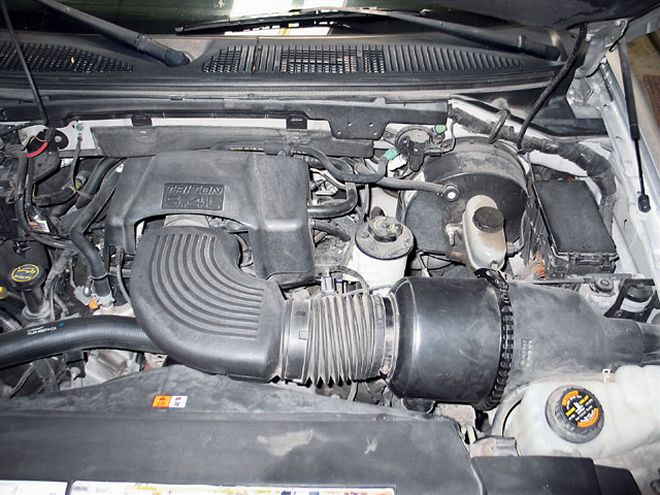
| 2001 Ford F150 under The Hood
TeardownHere we go. Obviously, before we can install the new tube, we have to get the stock stuff off, but here is what you should see under your hood-lots of plastic.
G-Tech ResultsOnce we input the weight of the Ford and set the rpm calibration, the G-Tech was ready to give us some before and after numbers. The G-Tech is pretty reliant on having the proper weight of the vehicle you are testing, so either weight it with you in the seat or do a bunch of math. We didn't have access to a scale the day of the shoot, so we filled up the 26-gallon tank, which equals 156 pounds, and added that to the weight of the truck and our fat butts. That got it close enough to perform a before and after test, but if we want it dead-on we'd have to find a scale. So, will your truck run a 16.81? Nope, but it will run this amount faster than it did before the parts.
Tools UsedThis job was pretty simple and required very little tools, with only one that might be considered special, the Torx socket, for the screws in the side of the heat shield.
The Final WordWith the Fram Boost intake in place and the Hypertech Program installed, the truck has the sound and grunt we would expect from a V-8. When we hit the go pedal, the tires went up in smoke, instead of just a chirp, and when the revs got to 5,500, the tranny snapped into second instead of melting into it. With a total cost of about 640 bucks, we think these mods are well worth the coin for the right pedal excitement they gave us.
 | 2001 Ford F150 the Kit
Every day, we get letter after letter with the same basic question: "How do I make my truck faster without breaking the bank?" As self-proclaimed horsepower junkies, we hear you loud and clear. So, for all you '97-'03 Ford F-150 owners with the 5.4L V-8 under the hood who want to shave about a second off your quarter-mile times or just put the tires up in smoke when you leave a buddy's shop, read on.
We will be using basic parts that, by now, you should all know why they work, but just in case you have forgotten, we will touch on the theory a bit. The parts we will be using for this truck are Fram's new Boost Air Intake system that consists of a mandrel-bent aluminum tube that is powdercoated, a Dryflow filter that requires no oil but is still cleanable, and all the necessary hardware to install it. The system is designed to allow air to get sucked into the motor with less restriction, so when the piston goes down it can pull in all the air it needs without having to pass by all the factory restrictions. The Dryflow air filter that Fram uses requires no oil and is still a washable unit. It will provide more than enough flow to support the 5.4L, and Fram claims a 7.2 hp increase once installed. Instead of strapping the truck to the dyno, we decided to do a few quarter-mile blasts with our new G-Tech performance meter to justify the increase in performance. You can see the G-Tech results at the end of the article.
To complement the intake and let the truck's computer use the newfound air, we enlisted the help of a Hypertech Power Programmer III. The Hypertech unit replaces the factory program with a performance tune that adjusts timing and fuel curves for a company claim of a 10hp gain on the 93 octane setting or 7hp gain on the 87 octane setting. On top of just the power tune, the Power Programmer III also allows you to adjust for oversized tires, rearend gear swaps, transmission shift points, and shift firmness, and it has the ability to move the top speed limiter for all you speed freaks. Since the Hypertech unit stores your stock tune in the programmer itself, if you ever have to take it to the dealer, all you have to do is plug it in and hit the Return to Stock option.
Both of these components were pretty easy on the budget, coming in at about $640 total for this application and are totally suited for a home install, requiring only a few sockets and a screwdriver. The G-Tech told us we clipped off just shy of a full second on the e.t., and our ears told us it must be making more power due to the loud screeching sound coming from the back tire on launch, which it didn't do before. So, check out how all this stuff goes into a Blue Oval pickup.
| 2001 Ford F150 the Kit
Every day, we get letter after letter with the same basic question: "How do I make my truck faster without breaking the bank?" As self-proclaimed horsepower junkies, we hear you loud and clear. So, for all you '97-'03 Ford F-150 owners with the 5.4L V-8 under the hood who want to shave about a second off your quarter-mile times or just put the tires up in smoke when you leave a buddy's shop, read on.
We will be using basic parts that, by now, you should all know why they work, but just in case you have forgotten, we will touch on the theory a bit. The parts we will be using for this truck are Fram's new Boost Air Intake system that consists of a mandrel-bent aluminum tube that is powdercoated, a Dryflow filter that requires no oil but is still cleanable, and all the necessary hardware to install it. The system is designed to allow air to get sucked into the motor with less restriction, so when the piston goes down it can pull in all the air it needs without having to pass by all the factory restrictions. The Dryflow air filter that Fram uses requires no oil and is still a washable unit. It will provide more than enough flow to support the 5.4L, and Fram claims a 7.2 hp increase once installed. Instead of strapping the truck to the dyno, we decided to do a few quarter-mile blasts with our new G-Tech performance meter to justify the increase in performance. You can see the G-Tech results at the end of the article.
To complement the intake and let the truck's computer use the newfound air, we enlisted the help of a Hypertech Power Programmer III. The Hypertech unit replaces the factory program with a performance tune that adjusts timing and fuel curves for a company claim of a 10hp gain on the 93 octane setting or 7hp gain on the 87 octane setting. On top of just the power tune, the Power Programmer III also allows you to adjust for oversized tires, rearend gear swaps, transmission shift points, and shift firmness, and it has the ability to move the top speed limiter for all you speed freaks. Since the Hypertech unit stores your stock tune in the programmer itself, if you ever have to take it to the dealer, all you have to do is plug it in and hit the Return to Stock option.
Both of these components were pretty easy on the budget, coming in at about $640 total for this application and are totally suited for a home install, requiring only a few sockets and a screwdriver. The G-Tech told us we clipped off just shy of a full second on the e.t., and our ears told us it must be making more power due to the loud screeching sound coming from the back tire on launch, which it didn't do before. So, check out how all this stuff goes into a Blue Oval pickup.
 | 2001 Ford F150 under The Hood
Teardown
| 2001 Ford F150 under The Hood
Teardown